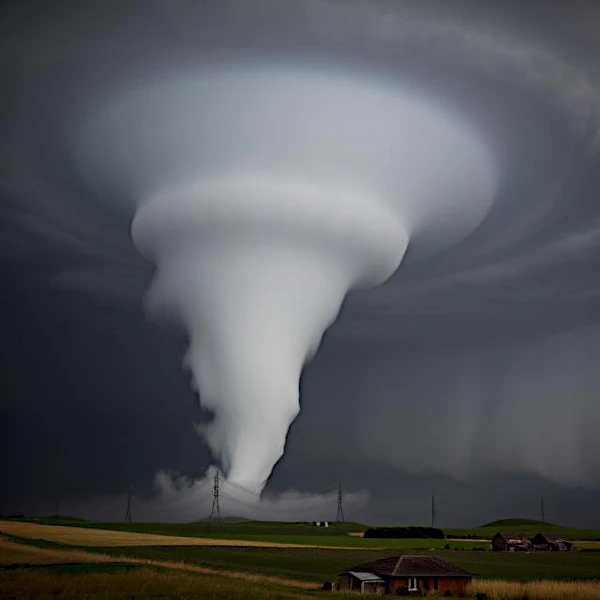
The Fujita Scale, introduced in 1971 by meteorologist Tetsuya Theodore Fujita (1920-1998), is a tool for classifying tornadoes based on the intensity of damage inflicted on human structures and vegetation. It does not directly measure wind speeds but infers them from observed damage. Originally called the F-Scale, it was replaced in 2007 in the United States by the Enhanced Fujita Scale (EF), which is more precise and better correlated with modern construction materials.
The classification is based on the mechanical analysis of damaged structures. It estimates the shear, torsion, and uplift forces required to produce such damage. These forces are related to the dynamic pressure of the wind, $\frac{1}{2} \rho v^2$, where $\rho$ is the air density and $v$ is the wind speed. Thus, an EF5 tornado implies a dynamic pressure exceeding $10\ \text{kPa}$, capable of uprooting entire foundations.
The EF Scale has six levels, from EF0 to EF5. Each level corresponds to a range of estimated speeds and typical types of damage. It is primarily used in North America, but variants exist in other countries (such as TORRO in the United Kingdom).
| Category | Estimated Wind Speed (km/h) | Typical Types of Damage | Frequency |
|---|---|---|---|
| EF0 | 105 – 137 | Broken branches, tiles torn off | Very frequent |
| EF1 | 138 – 178 | Damaged roofs, destroyed garages | Frequent |
| EF2 | 179 – 218 | Partially destroyed houses | Moderate |
| EF3 | 219 – 266 | Collapsed load-bearing walls | Rare |
| EF4 | 267 – 322 | Houses leveled, cars thrown | Very rare |
| EF5 | > 322 | Structures torn from foundations | Exceptional |
The indirect estimation method based on damage introduces some subjectivity, as construction quality varies significantly. Additionally, in rural areas with few infrastructures, powerful tornadoes may be underestimated due to a lack of elements to destroy. Current research attempts to integrate mobile Doppler sensors and drones to refine real-time measurements.
The Fujita Scale remains a central tool in tornado meteorology, despite its approximations. By combining empirical observation, fluid dynamics, and materials engineering, it allows for the assessment of the danger posed by one of the most violent atmospheric phenomena on the planet. Current research aims to more precisely correlate measured speeds with observed damage for increasingly effective prevention.